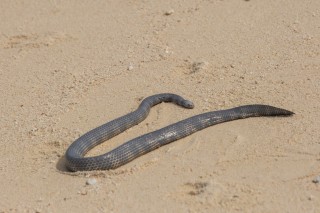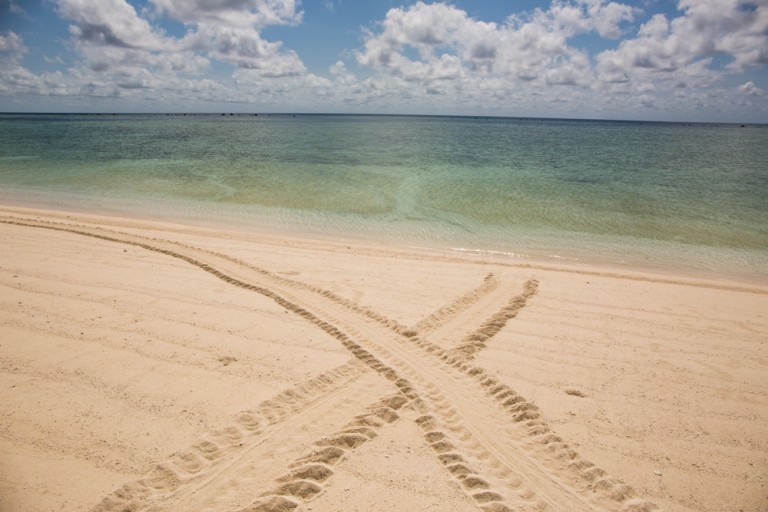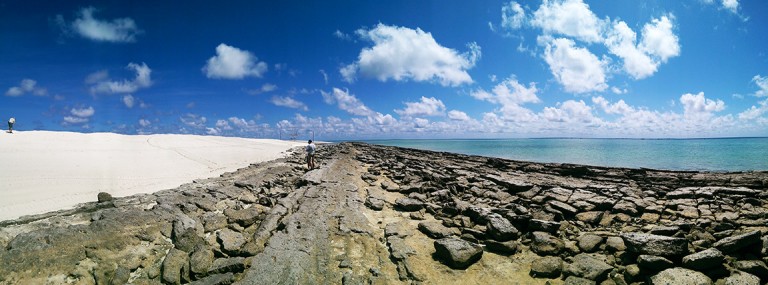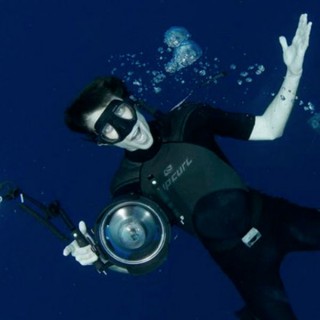We have arrived at Scott Reef! The scientists and crew have begun to work on the details for operating robotics from the ship. Logistics are a priority, especially when implementing plans and practices for the launch and recovery of important robotics. Everyone on board is busy trouble-shooting different mechanical and software systems before beginning open ocean test runs. You can see the science team beginning to find their rhythm that will allow for a smooth flow of operations onboard.


Calibration celebration
Yesterday, a small group from the science party made a trip in Falkor’s work boat to a nearby sandbar as part of the preparations. Scientist’s Rich Camilli and Angelos Mallios needed to calibrate the Webb Glider compass, an Autonomous Underwater Vehicle (AUV) that uses changes in buoyancy to propel itself while collecting chemical data. The team left the vessel and headed to a nearby island so that the glider could be off of the ship. The metal fromFalkor creates a magnetic interference with the earth’s magnetic field that makes calibration difficult. The glider uses the earth’s magnetic field as part of its guidance system, so Camilli and Mallios calibrated with a fluxgate compass that provides a heading reference. They calibrate by moving the glider to different headings, and then check the readings to see how much it is off by, then adjusted accordingly.
A nursery and a graveyard

Lead Deckhand/ 3rd Officer Erik Suits skillfully navigated the science team to the island. Upon arrival, scientists Camilli and Mallios unloaded their gear and completed their calibrations. During the tests they were rewarded with several surprises. The first was an encounter with a sea snake on the beach. The science team was shocked by how far the snake had traveled across the island. “We wondered if the snake made its way onshore for temperature regulation, basking in the warm sun, or to hunt the small birds that were nesting in the sand” said Mallios.
Further down, the science team came across dozens of turtle tracks leading from the ocean to an elevated beach. The tracks ran to slightly sunken craters, suggesting that this was an active nesting ground. Additionally, they found egg shells littered over the beach providing further evidence of turtle nests. Not too far away, the scientists came across several sea turtles skeletons, “this is an interesting place,” said Camilli, “it appears to be both a nursery and a graveyard.”

Uplifted
The calibration station also offered geological wonders including an impressive expanse of limestone stretching from the beach into the water. From a distance, the rock looked like coral heads, but upon closer inspection it was clear that the rock had actually been uplifted. “It was interesting to see faulted limestone, which explains why the sand, made of ground up bits of coral, has accumulated here and made the island,” explained Camilli.


The science team also found two nautilus shells on the windward side of the island, which are very rare to see. Looking at nautical charts, you can see there is a steep 2000 meter ocean drop just outside the lagoon. Nautilus animals tend to live in deep waters, and the lagoon’s geology may indicate ideal nautilus habitat.
The science team agreed that this calibration excursion was not only productive, but an honor. “It is amazing to explore a new place, this must have been what if felt like in old times”, said third officer Suits. There certainly were a few things that spoke of timelessness, including an island accommodating both life and death.

